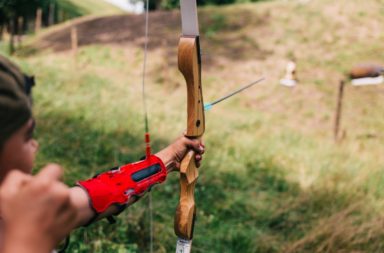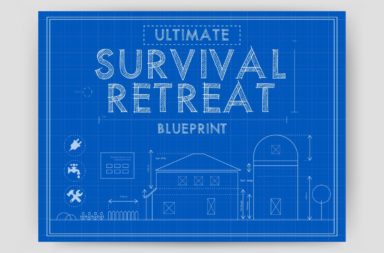At some point, most everyone wonders about building primitive weapons. As a kid, I used to make homemade bows, spears and even crude stone head tomahawks. Suffice it to say, my parents were not always amused with my clever creations, but I learned a few valuable lessons that carried over into adulthood.
First off, primitive weapons seem easy to make, but really take a high level of skill to be useful, and to be used in a useful fashion. Secondly, adapting modern materials to primitive designs really speeds up the process. And finally, I’ll take my Smith and Wesson model 57 any day over a sharp point rock or stick.
However, as a historian, I continue to study primitive weapons and appreciate them at a new level I hadn’t before. But just how viable are they for the survivor or prepper, and what can you make using salvaged and natural materials?
Types of Primitive Weapons
There are many different kinds of primitive weapons, ranging from a rock, to masterfully crafted bows that take days or weeks to build with simple hand tools. It is something of a romantic trope that the modern survivor can readily recreate and use the tools of our ancestors in an emergency setting. Many survival manuals and guides show how to make simple bows or spears, but miss the most important thing- knowledge and skill.
If you are going to seriously consider primitive weapons as part of your survival strategy, you must start practicing making and using these weapons now while you have the luxury to do so. Here are a few simple primitive weapons you can start learning to make and master right now.
- Spears
- Bow and arrows
- Blowguns
- Slings
- Hand Axes – Tomahawks
While this list isn’t exhaustive, or even comprehensive, it does cover some of the easiest to make primitive weapons. Naturally it isn’t required to make these weapons with primitive materials. A survivor likely will still have access to an array of modern materials, ranging from paracord (you DO keep paracord in your kit or on your person, right?) to various metals, glues, and other refined or synthetic material.
It is quite possible to build a primitive weapon using nothing but modern materials, but in a pinch you can use whatever range of natural to modern materials you have on hand.
Spears
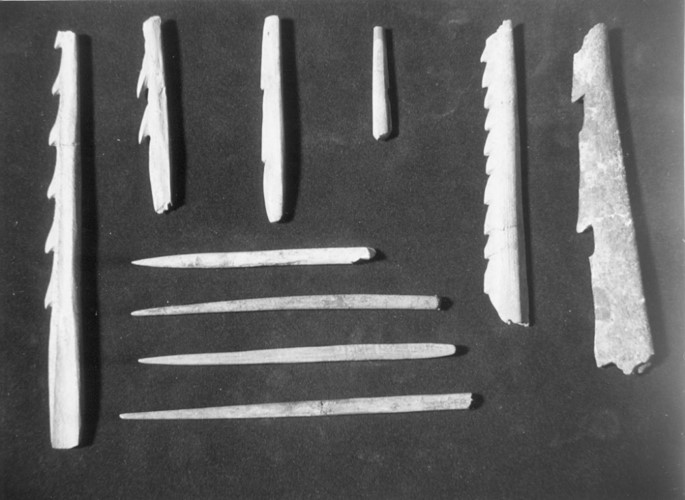
Various harpoon and other bone points found at Old Man House.
There are a lot of ways to use bones to make survival weapons. You are really only limited by your skills and imagination.
In their simplest form, spears are nothing more than a sharp pointy stick. You might fire harden it, but it turns out that mostly makes the spear point weaker. You’ll be better off just sharpening some dry wood with a knife if you can. Better still, fabricate a point from bone, stone, metal or something else that can hold an edge.
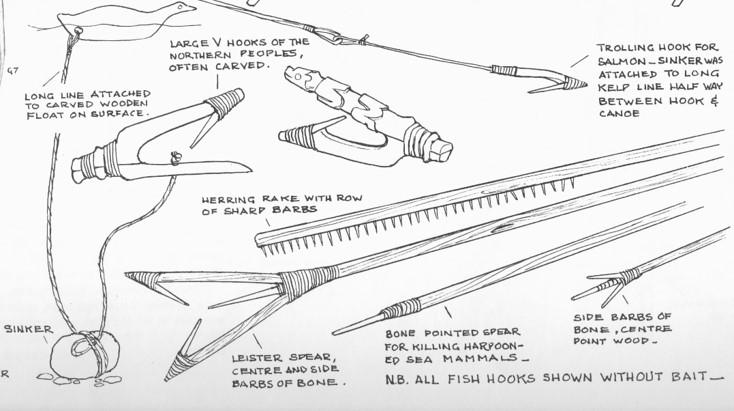
The many different ways bone spear points were used.
Illustration from Indian Artifacts of the Northwest Coast by Hilary Stewart.
Unless you really practice and develop an expertise with spears, you probably won’t be throwing one into a deer to kill it, but as a way of extending your reach, and serving as an extension of your arm, spears are great. As a bonus, they are easy to fabricate and a stockpile can be made if you really feel the need.
Spears can be thrown by hand, but it is even better to use an atlatl or spear thrower to increase the power of your throw and the range. Commonly used by primitive hunters, this is going to be your best tool for making your spear an effective weapon beyond a simple hand held stabbing too. As you can see, the atlatl is cupped on one end to hold the spear butt, and grooved down the middle. With some practice you can master the art of spear throwing, and apply it to many different survival situations.
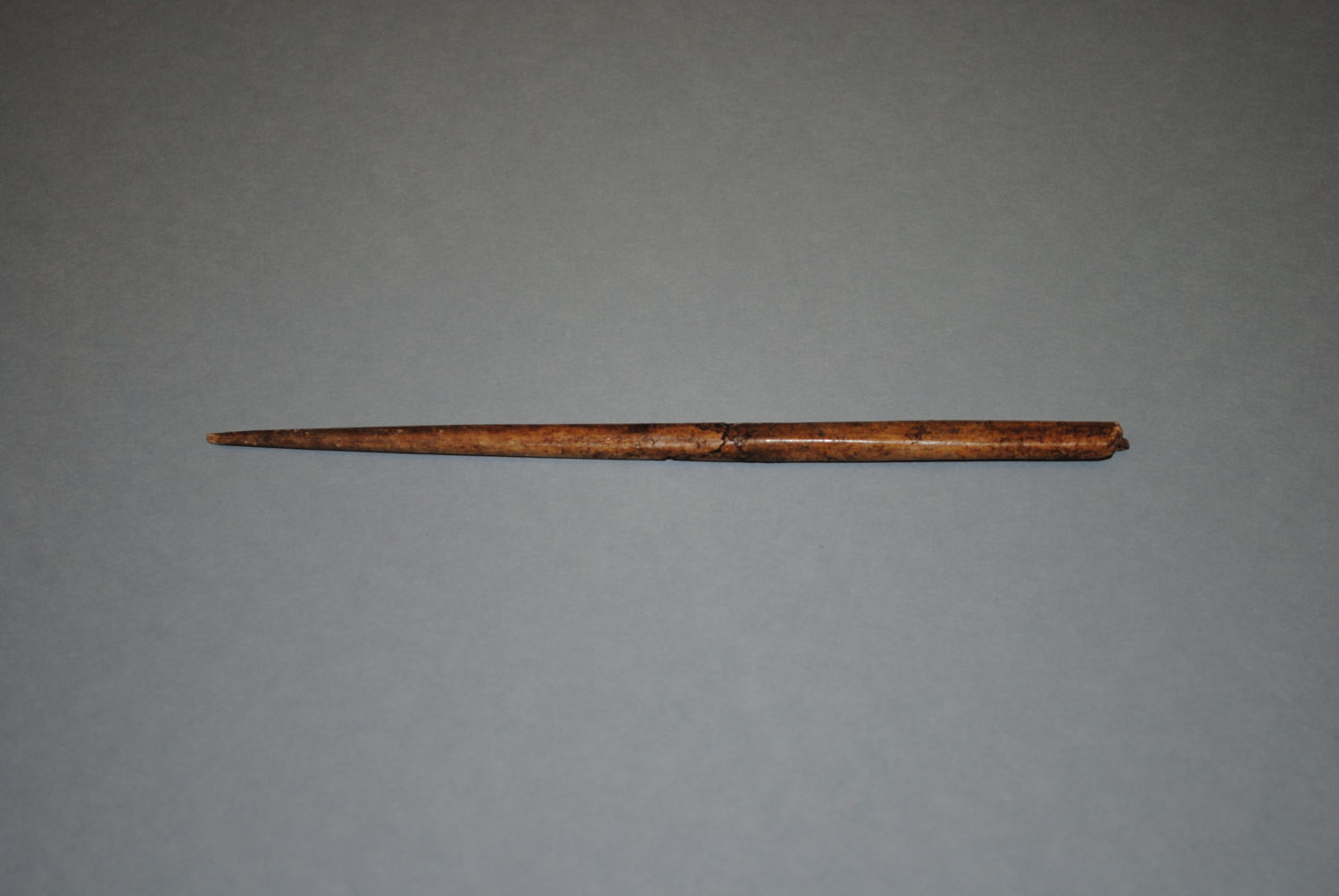
Bone spear point found at Old Man House, the final home of Chief Seattle.
Bow and Arrow
Perhaps the first primitive weapon that springs to mind when discussing such things, the bow and arrow is deceptively easy to make, and very hard to master both the use and building. As we can see from the image of the historic Suquamish Indian bow from Washington State, they can be formed from a straight grained, flat piece of wood, with the ends notched out to take the bow string.
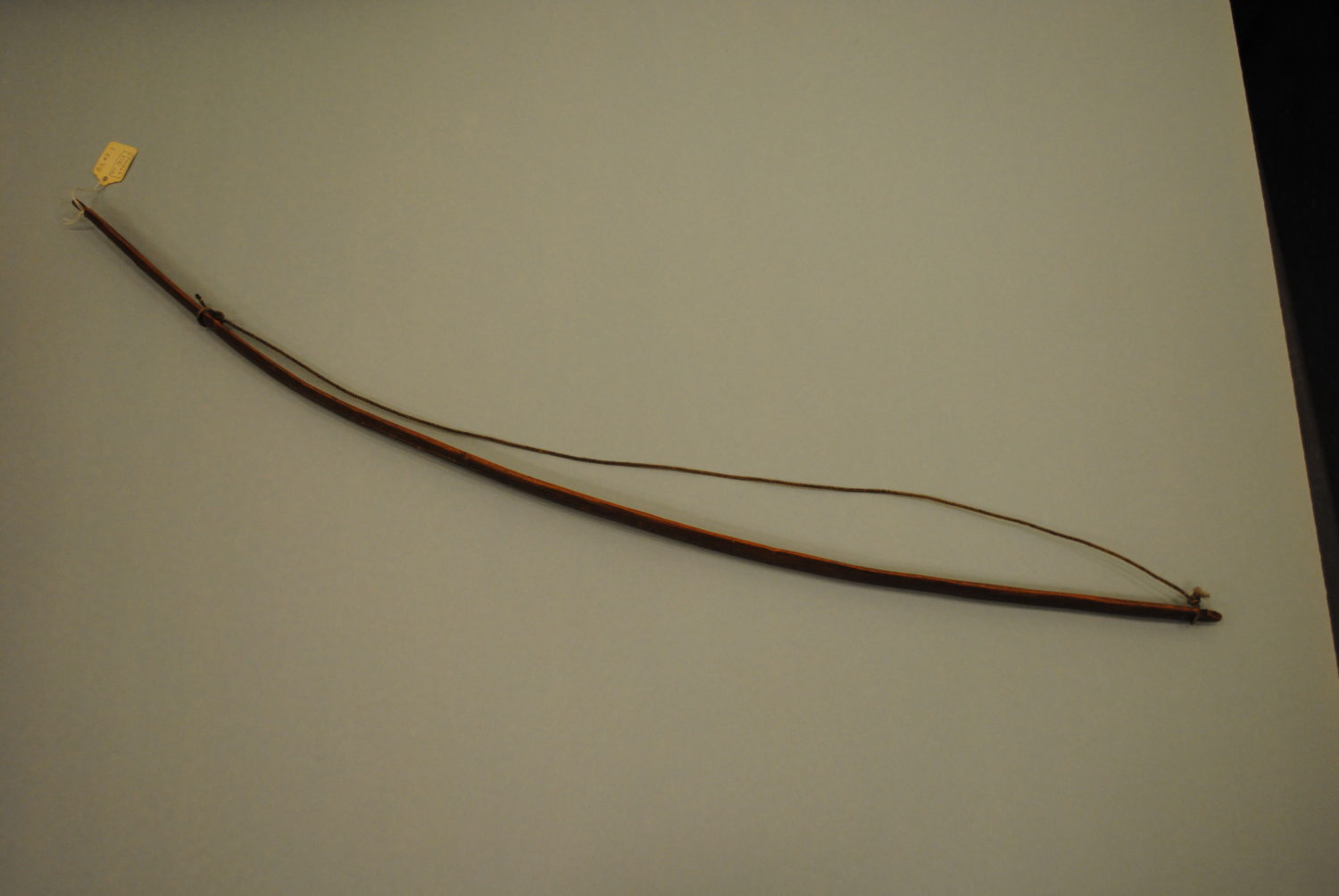
Bow once owned by Suqaumish tribal member Annie Rodgers. Note the simple construction which would be easy to duplicate.
Such a bow could be made with modern metal tools in an afternoon, and if you have suitable cordage on hand, you’ve got something that will at least take small game, or be useful in a pinch as an offensive weapon. You can scale up the power of the bow with longer and thicker wood, but the draw rate will quickly rise as well. Remember, considerable upper body strength is required to use heavy bows.
Making the arrows is something of an art. While you can work with a short, pointed stick if nothing else is available, fletching the arrow with stabilizing feathers, and adding a proper projectile point will make a world of difference. Even with modern tools, arrow making takes much skill, and practice. However, there is no denying that a person with a good, heavy bow and plenty of arrows is well equipped from a survival standpoint, either as a weapon or a hunting tool.
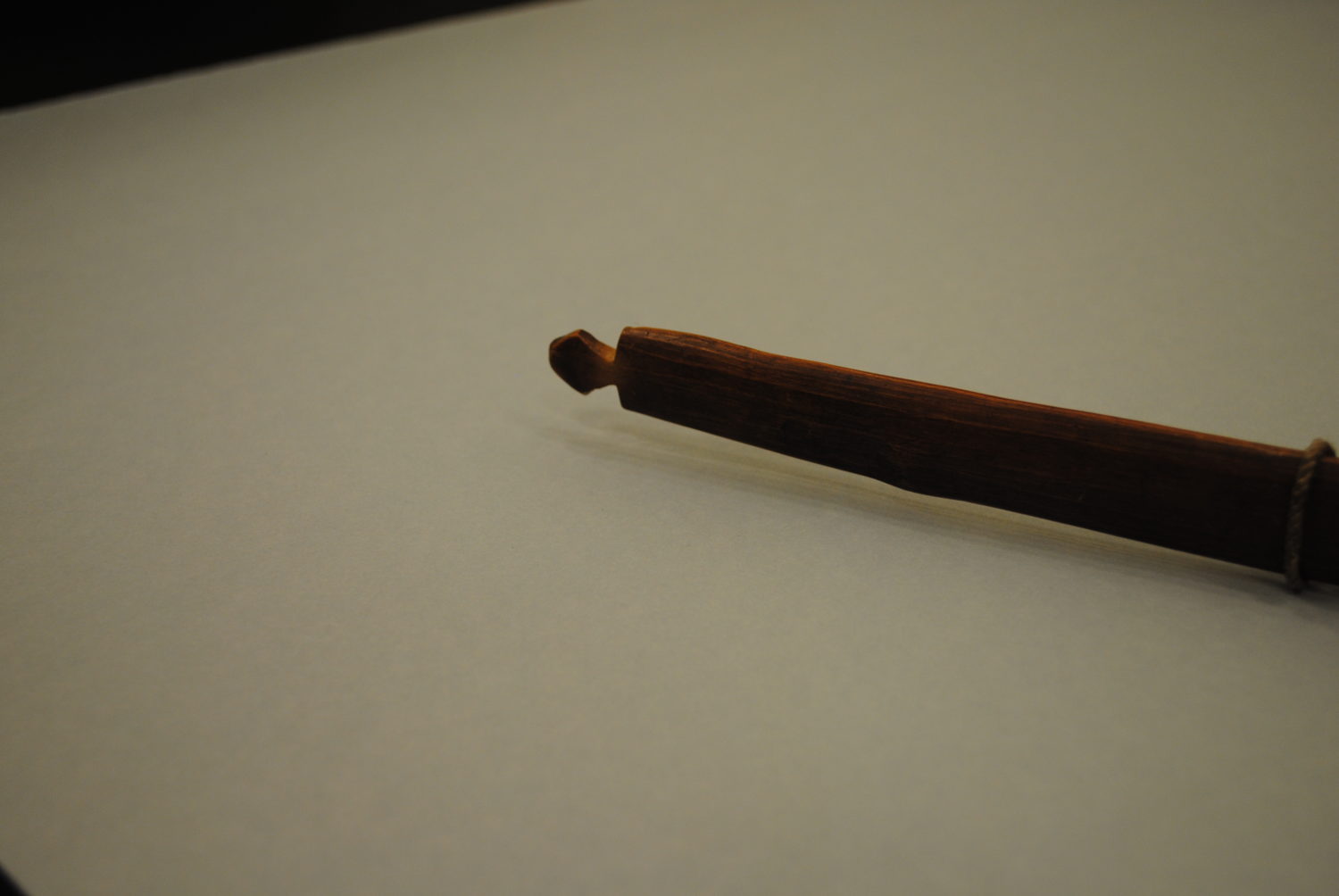
Close up detail of notching on bow. This would be relatively easy to do with common tools.
However, bows are also crazy easy to buy, so you might be better off buying a good compound bow and supply of carbon fiber arrows, and leaving the handcrafting to people who make making such things a hobby or lifestyle.
Blowguns
Much to my parent’s annoyance, I discovered the art of making blowguns around the time I was eleven. Even these crude, handmade weapons that used darts made out of bits of pointy wire and wood were lethal enough to take a small bird or injure a larger animal – or person. The point is, if an 11 year-old-kid with a pocket knife can whip out an effective primitive weapon so can you.
Blowguns and blowgun darts are crazy easy to make or you can just buy one.
I’d go so far as to say if you are packing a survival kit, you should probably include a blowgun and a supply of darts. Neither takes up much room, the darts are reusable, and they are incredible weapons for hunting, or even self defense. And if everything goes to heck, well – you can always come up with some really unpleasant compounds to put on the darts too.
Considering you might have a hard time finding hollow materials to make the blowgun, and how lightweight and portable they are, it really would be best just to keep one around if possible. And if not well, you’ve already seen how easy a blowgun is to make.
As an added bonus, blowguns are really easy to practice with and gain proficiency in. And hey, if you don’t have the hot air to do it, go find a politician and see how they master the art of being a windbag.
Other Types of Primitive Weapons
Sling
The sky’s the limit on primitive weapons you can make or buy. The sling is an age old weapon that is well known from the Biblical account of David and Goliath. Easy to make, or buy, you have a lot of flexibility on ammo, and while it takes some practice, this primitive weapon is deadly at a distance. With a little skill and luck, you could even take down a person carrying a firearm with it. Bonus points, free firearm! What’s not to love?
Tomahawk
Tomahawks should be considered a regular item in a survival kit Tomahawks require no introduction, and can be easily purchased, or made with a variety of tools. I made one with a rock, some wire and a heavy stick once. Seriously, my parents were not amused with my backyard antics. Not my fault I was reading Army survival guides and history books at a young age.
A good compromise over carrying a hatchet (or heck, just carry a hatchet instead and use it as a weapon if you need), they are light, effective for common camp chores and a time proven weapon that is still in use today.
Hand axes and tomahawks can be made with any sort of material that will take an edge and can be fitted, lashed, glued, or somehow attached to any kind of handle. Naturally the sturdier the better, and modern materials win out, but even a rock with a hand chipped edge tied to a stick with rawhide can be a fearsome tool in the right hands.
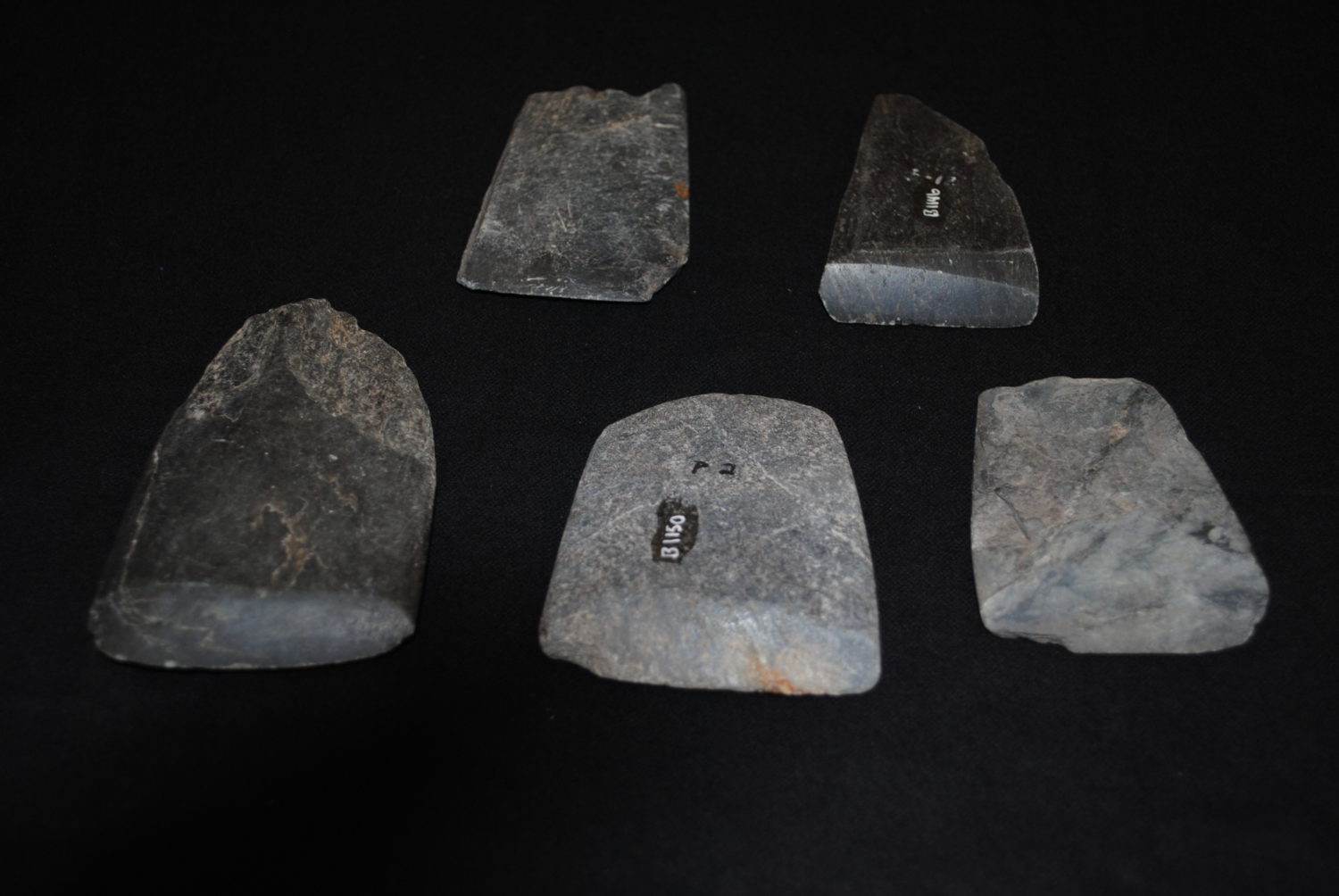
Jade adze blade from the Bertleson Collection.
This shows the many ways stone can be shaped into edged tools and weapons.
As with any primitive weapon you can make or buy, practice makes perfect. Learn and master the tomahawk while you still can. And don’t waste your time throwing them. Sure, that might work sometimes, but if you miss, or fail to incapacitate or kill an enemy, you’ve just lost your weapon and given them a free one.
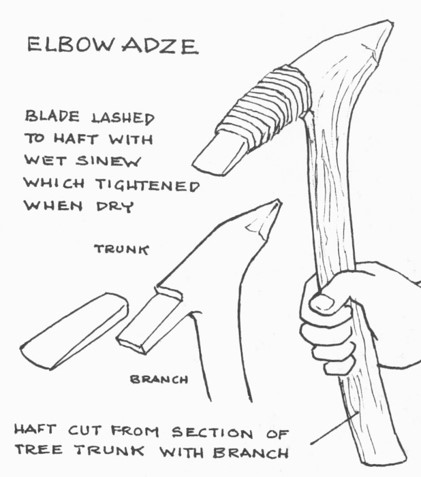
The many ways adze blades can be fitted to handles.
These same methods could be used for homemade primitive weapons using stone heads, or heads made from salvaged materials.
Survival Role Of Primitive Weapons
There are a great many primitive weapons you can make or buy. Everything from spears to tomahawks can be bought on the open market- and they are all quite good and can be even better than any ever made or used in the past. But what role do primitive weapons play in the inventory and skill set of the modern day prepper or outdoor person? Certainly they are a great way to reconnect to our past, or understand aspects of other cultures. But are they relevant to the modern person?
I’d say they are. We know that each and every weapon described here has a modern, commercial form that can be used as a weapon or hunting tool. Many are even in common use today, proving their utility. Making them from scratch or salvaged materials is a bit of a romantic notion.
You really have to develop and master the skills to make a primitive weapon before you need one. If you choose to devote some of your time to learning these skills, that is great. In fact, you probably should do so, if you believe you have a probable risk of being isolated from normal channels of commerce and trade.
Of course learning to make and use primitive weapons is a great hobby, so there is always that. Regardless, primitive weapons you can make or buy can play an important role in the prepper’s tool chest if you want them to. Hopefully you’ll never need to make and use one. But if you do…
Author’s Note About the Suquamish Museum Images
I’d like to thank Suquamish Tribal Museum Archivist/Curator Lydia Sigo for kindly sharing these images. They are authentic weapons and tools that represent the last of their kind made during the time the native peoples of Washington State lost their traditional way of life in the mid to late 19th century. As such, they represent the high water mark of their culture and methods. We can see that even with access to metal tools, traditional materials were sufficient for hunting and regular use.
The Suquamish people were a Coast Salish speaking people who lived in and around present day Seattle. Chief Seattle lived among them, and they lived a fully self sufficient lifestyle prior to the arrival of Europeans. These images demonstrate how well they were able to use non industrial tools and materials to survive and live a lifestyle some of us can only dream of.
Today, in the comfort and wealth of the 21st century, these items might appear to be quaint or old fashioned, but for the men and women who made and used them, they were a way of life, and the means to feed their people. Few of us reading this article would be able to duplicate these weapons and tools, and then use them for hunting or protection. The skills needed to make and use these items takes years to master and is not something to be casually undertaken.
